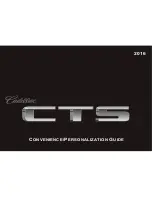
ies that are stuck between the tyre
tread blocks can be removed.
2. Changing a damaged wheel
→
page 352. If necessary, contact a suit-
ably
qualified
workshop.
Or:
Use the breakdown set to seal the
damaged tyre and then
inflate
it
→
page 357.
3. Check and adjust the tyre pressure.
4. Go to a correspondingly
qualified
work-
shop.
Vehicles with AirStop® tyres:
1. Leave the foreign body in the tyre and
go to a suitably
qualified
workshop.
A sealant applied to the inside of the
tyre tread encloses the foreign body
and seals the tyre temporarily.
Tyre wear
The tyre wear is
affected
by several factors:
— Style of driving.
— How well the tyres are balanced.
— Adjustments made to the running gear.
Fast cornering, heavy acceleration and hard
braking all increase tyre wear.
Wheel imbalance may develop when the
vehicle is driven; you will notice this by the
nervous steering response. Imbalanced
tyres will
affect
the level of tyre wear. In
this case the wheels should be balanced
again.
Incorrect wheel alignment causes exces-
sive tyre wear, impairing the safety of the
vehicle. The wheel alignment should be
checked by a suitably
qualified
workshop if
tyres show excessive wear.
WARNING
If you notice unusual vibration or the vehi-
cle pulling to one side while the vehicle is
in motion, this may indicate that one of
the tyres is damaged.
·
Slow down immediately and stop as
soon as the
traffic
situation permits and
it is safe to do so.
·
Check the tyres and wheel rims for
damage.
·
Never drive on if tyres or wheel rims are
damaged. Instead, seek assistance
from a correspondingly
qualified
work-
shop.
·
If there is no visible damage, drive slow-
ly and cautiously to the nearest suitably
qualified
workshop in order to have the
vehicle checked.
New wheels and tyres
Please refer to at the start of the
chapter on page 335.
New tyres
— Drive particularly carefully for the
first
600 km (370 miles) with new tyres as
the tyres have to be run in. Tyres that
have not been run in have reduced grip
and braking
efficiency
→
page 336.
— Both wheels on an axle must be
fitted
with tyres of the same type, size, and the
same tread pattern.
— The tread depth of new tyres may vary
between tyre models and manufacturers
due to
different
design features and
tread designs.
Replacing tyres
— Always replace tyres at least on an axle-
by-axle basis
→
page 336.
— Old tyres should only be replaced by
tyres that have been approved for the ve-
hicle type.
— Replace old tyres only with tyres that
have the same
specifications
– including
width, diameter, load capacity and maxi-
mum speed – as those approved for your
vehicle and model.
— Never use tyres with an
effective
size that
is larger than tyres approved for the vehi-
cle.
Re-synchronising the Tyre Pressure
Loss Indicator
The Tyre Pressure Loss Indicator must be
resynchronised
after
changing one or more
wheels. This also applies if the wheels have
been swapped, e.g. from the front to the
rear
→
page 330.
Information about wheels and tyres
341
2KF012
720AB
Содержание TOURNEO CONNECT
Страница 13: ...Driver door 11 2KF012720AB ...
















































